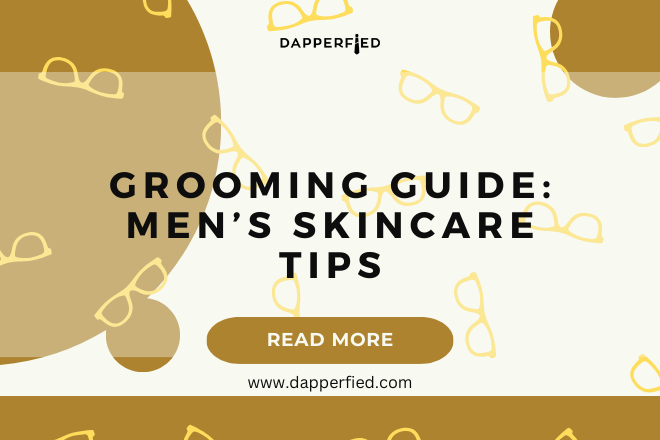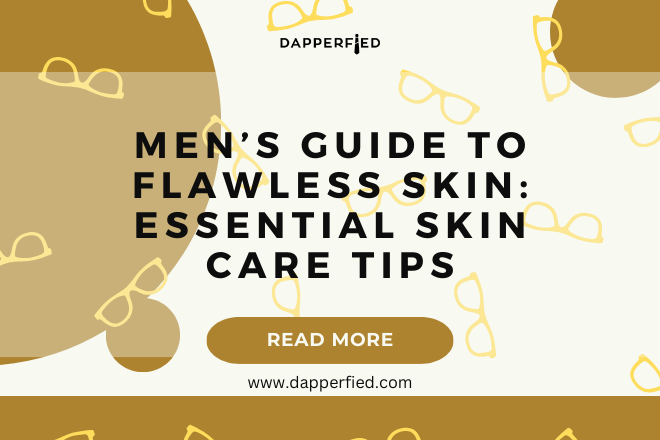
Men's Style
Mastering Men’s Shaving: Techniques for a Smooth Finish
Shaving is a daily ritual for many men, and even some women, around the world. It is a task that requires precision and care in order to achieve a smooth and clean shave. A good shave not only helps to maintain personal hygiene, but it also contributes to a well-groomed appearance. There are several factors that contribute to a good shave, including pre-shave preparation, choosing the right razor, perfecting your shaving technique, using the right shaving cream, post-shave care, dealing with ingrown hairs, shaving sensitive skin, maintaining your razor, shaving different parts of your face, and advanced shaving techniques.
Key Takeaways
- Proper pre-shave preparation is essential for a smooth shave.
- Choosing the right razor depends on personal preference and skill level.
- Mastering the shaving stroke is key to a close and comfortable shave.
- Finding the right shaving cream formula for your skin type is important.
- Post-shave care is crucial for nourishing and soothing your skin.
Pre-Shave Preparation: The Key to a Smooth Shave
Pre-shave preparation is an essential step in achieving a smooth shave. It helps to soften the hair and open up the pores, making it easier for the razor to glide smoothly over the skin. There are several steps involved in pre-shave preparation. First, it is important to wash your face with warm water to remove any dirt or oil that may be on the skin. This will help to prevent clogged pores and reduce the risk of irritation.
After washing your face, it is recommended to exfoliate the skin using a gentle scrub or exfoliating brush. This will help to remove dead skin cells and lift any ingrown hairs, making it easier for the razor to cut through the hair. Next, apply a pre-shave oil or gel to further soften the hair and provide a protective barrier between the razor and the skin. Finally, apply a warm towel to the face for a few minutes to further soften the hair and open up the pores.
Choosing the Right Razor: Safety vs Straight Razors
Choosing the right razor is crucial in achieving a good shave. There are two main types of razors available: safety razors and straight razors. Safety razors are the most common type of razor used today. They have a protective guard that helps to prevent nicks and cuts, making them a safer option for beginners. Straight razors, on the other hand, require more skill and precision to use. They do not have a protective guard, so it is important to be extra careful when using them.
When choosing a razor, it is important to consider factors such as your skin type, hair type, and personal preference. If you have sensitive skin or coarse hair, a safety razor may be a better option as it is less likely to cause irritation. However, if you have fine hair and are looking for a closer shave, a straight razor may be worth considering. It is also important to choose a razor that feels comfortable in your hand and has a good weight balance.
Perfecting Your Shaving Technique: Mastering the Art of the Stroke
| Technique | Rating (out of 10) |
|---|---|
| Pre-shave routine | 8 |
| Choosing the right razor | 9 |
| Using the correct shaving cream | 7 |
| Angle of the razor | 9 |
| Pressure applied | 8 |
| Post-shave routine | 7 |
Having a good shaving technique is essential in achieving a smooth and clean shave. It is important to use light and gentle strokes to avoid putting too much pressure on the skin, which can lead to irritation and razor burn. Start by shaving in the direction of hair growth to minimize the risk of ingrown hairs. Once you have shaved with the grain, you can then shave against the grain for an even closer shave.
It is also important to rinse the razor frequently during shaving to remove any hair or shaving cream buildup. This will help to ensure that the razor glides smoothly over the skin and does not cause any tugging or pulling. After shaving, rinse your face with cold water to close up the pores and soothe the skin. Pat your face dry with a clean towel and apply an aftershave lotion or balm to moisturize and nourish the skin.
The Importance of Shaving Cream: Finding the Right Formula for Your Skin
Shaving cream plays a crucial role in achieving a good shave. It helps to lubricate the skin and hair, making it easier for the razor to glide smoothly over the skin. There are several types of shaving cream available, including creams, gels, and foams. Creams are generally thicker and provide more cushioning, making them a good option for those with sensitive skin. Gels are lighter and provide a cooling sensation, making them a good option for those with oily or acne-prone skin. Foams are the most common type of shaving cream and are suitable for most skin types.
When choosing a shaving cream, it is important to consider your skin type and personal preference. If you have dry or sensitive skin, look for a shaving cream that contains moisturizing ingredients such as aloe vera or glycerin. If you have oily or acne-prone skin, look for a shaving cream that is oil-free and non-comedogenic. It is also important to choose a shaving cream that has a pleasant scent, as this can enhance the overall shaving experience.
Post-Shave Care: Nourishing and Soothing Your Skin

Post-shave care is just as important as pre-shave preparation in achieving a good shave. It helps to soothe and nourish the skin, reducing the risk of irritation and razor burn. After shaving, rinse your face with cold water to close up the pores and soothe the skin. Pat your face dry with a clean towel and apply an aftershave lotion or balm to moisturize and nourish the skin.
It is important to choose an aftershave lotion or balm that is suitable for your skin type. If you have dry or sensitive skin, look for a product that contains moisturizing ingredients such as shea butter or jojoba oil. If you have oily or acne-prone skin, look for a product that is oil-free and non-comedogenic. It is also important to choose a product that has a pleasant scent, as this can enhance the overall shaving experience.
Dealing with Ingrown Hairs: Tips and Tricks for Prevention and Treatment
Ingrown hairs can be a common problem for those who shave regularly. They occur when the hair curls back into the skin instead of growing outwards. This can lead to redness, inflammation, and even infection. There are several factors that can contribute to ingrown hairs, including shaving too closely, using a dull razor, and not exfoliating the skin regularly.
To prevent ingrown hairs, it is important to shave with the grain of the hair and avoid going against the grain. This will help to minimize the risk of the hair curling back into the skin. It is also important to use a sharp razor and replace it regularly to ensure a clean and smooth shave. Exfoliating the skin regularly can also help to lift any ingrown hairs and prevent them from occurring.
If you do develop an ingrown hair, there are several treatments available. You can try gently exfoliating the area with a scrub or exfoliating brush to help lift the hair out of the skin. Applying a warm compress to the area can also help to reduce inflammation and promote healing. If the ingrown hair becomes infected or does not improve with home remedies, it is recommended to see a dermatologist for further treatment.

Shaving Sensitive Skin: Avoiding Irritation and Razor Burn
Shaving sensitive skin can be a challenge, as it is more prone to irritation and razor burn. However, with the right techniques and products, it is possible to achieve a smooth and comfortable shave. When shaving sensitive skin, it is important to use a sharp razor and replace it regularly to ensure a clean and smooth shave. Dull razors can cause tugging and pulling on the skin, leading to irritation.
It is also important to use light and gentle strokes when shaving sensitive skin to avoid putting too much pressure on the skin. Shaving in the direction of hair growth can also help to minimize the risk of irritation and razor burn. After shaving, rinse your face with cold water to close up the pores and soothe the skin. Pat your face dry with a clean towel and apply an aftershave lotion or balm that is suitable for sensitive skin.
There are also several products available specifically for shaving sensitive skin. Look for shaving creams or gels that are formulated for sensitive skin and do not contain any harsh ingredients or fragrances. It is also important to choose an aftershave lotion or balm that is suitable for sensitive skin and does not contain any alcohol or other irritants.
Maintaining Your Razor: Cleaning and Storing Your Shaving Tools
Maintaining your razor is important in ensuring a clean and smooth shave. After each use, rinse your razor thoroughly with warm water to remove any hair or shaving cream buildup. Use a soft brush to gently clean the blades and remove any debris. It is important to avoid using harsh chemicals or abrasive materials, as this can damage the razor.
After cleaning your razor, pat it dry with a clean towel and store it in a dry place. Avoid leaving your razor in the shower or bathroom where it can be exposed to moisture, as this can cause rusting and dulling of the blades. If you are using a straight razor, it is recommended to strop the blade regularly to keep it sharp and in good condition.
There are also several products available specifically for maintaining your razor. Look for razor cleaning solutions or sprays that are designed to remove any buildup and keep the blades clean and sharp. It is also recommended to replace the blades regularly to ensure a clean and smooth shave.
Shaving Different Parts of Your Face: Tips for Shaving Your Beard, Neck, and Jawline
Shaving different parts of your face can require different techniques and approaches. When shaving your beard, it is important to use light and gentle strokes to avoid putting too much pressure on the skin. Shave in the direction of hair growth to minimize the risk of irritation and ingrown hairs. If you want a closer shave, you can then shave against the grain for an even smoother finish.
When shaving your neck, it is important to be extra careful as the skin in this area is more sensitive and prone to irritation. Use light and gentle strokes and shave in the direction of hair growth. It is also important to stretch the skin taut with your free hand to ensure a smooth and close shave.
When shaving your jawline, it is important to pay attention to the angle of the razor. The jawline can be a tricky area to shave, as the hair can grow in different directions. It is recommended to use short and precise strokes and shave in the direction of hair growth. If you are having trouble getting a close shave, you can try stretching the skin taut with your free hand or using a different angle with the razor.
Advanced Shaving Techniques: Achieving a Close Shave with Advanced Methods
For those who are looking for an even closer shave, there are several advanced shaving techniques available. One technique is called “buffing,” which involves using short and quick strokes in a circular motion to remove any remaining stubble. This technique requires practice and precision, as it can be easy to apply too much pressure and cause irritation.

Another advanced technique is called “blade buffing,” which involves using very light and quick strokes with the razor blade flat against the skin. This technique helps to remove any remaining stubble and achieve an incredibly close shave. However, it requires a steady hand and careful control of the razor.
There are also several products available specifically for advanced shaving techniques. Look for shaving creams or gels that are formulated for a closer shave and provide extra lubrication. It is also recommended to use a sharp razor and replace it regularly to ensure a clean and smooth shave.
Achieving a good shave requires attention to detail and the right techniques and products. Pre-shave preparation, choosing the right razor, perfecting your shaving technique, using the right shaving cream, post-shave care, dealing with ingrown hairs, shaving sensitive skin, maintaining your razor, shaving different parts of your face, and advanced shaving techniques all play a role in achieving a smooth and clean shave. By following the tips and techniques mentioned in this article, you can improve your shaving experience and achieve a close and comfortable shave. Don’t forget to share your own shaving tips and experiences in the comments section below!
If you’re looking to up your grooming game, mastering the art of men’s shaving techniques is a must. From choosing the right razor to achieving a close shave without irritation, there’s a lot to learn. But fear not, because we’ve got you covered. In fact, we recently came across an informative article on Dapperfied that delves into the world of men’s shaving techniques. It offers valuable tips and tricks to help you achieve a smooth and comfortable shave every time. Check it out here and take your shaving routine to the next level.
FAQs
What are the different types of razors that men can use for shaving?
There are several types of razors that men can use for shaving, including safety razors, straight razors, electric razors, and disposable razors.
What is the best time of day to shave?
The best time of day to shave is in the morning, after a shower or bath. This is because the warm water and steam from the shower or bath helps to soften the hair and open up the pores, making it easier to get a close shave.
What is the proper technique for using a safety razor?
The proper technique for using a safety razor involves holding the razor at a 30-degree angle to the skin, using short, light strokes, and shaving in the direction of hair growth. It is also important to rinse the razor frequently and use a shaving cream or gel to lubricate the skin.
What is the difference between a wet shave and a dry shave?
A wet shave involves using water and shaving cream or gel to lubricate the skin and soften the hair before shaving. A dry shave, on the other hand, involves shaving without any water or lubrication. Wet shaving is generally considered to be better for the skin and results in a closer shave.
What is the best way to prevent razor burn?
To prevent razor burn, it is important to use a sharp razor, shave in the direction of hair growth, and use a shaving cream or gel to lubricate the skin. It is also important to avoid shaving over the same area multiple times and to rinse the razor frequently. After shaving, apply a moisturizer to soothe the skin.
















